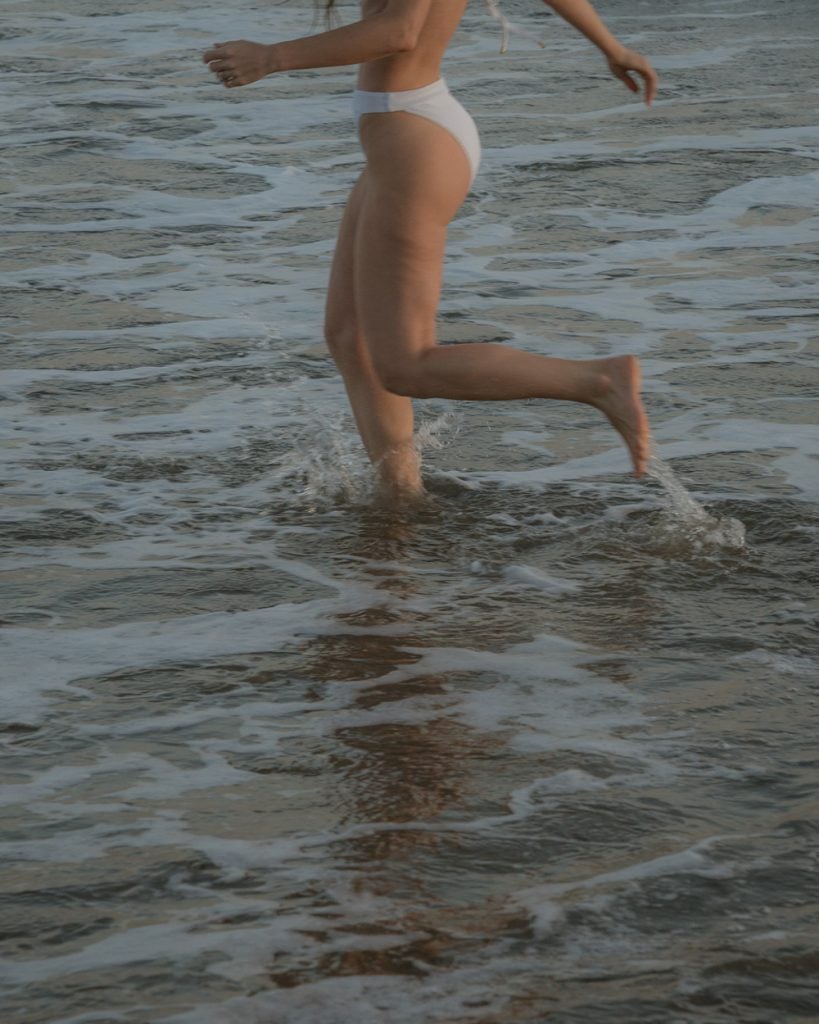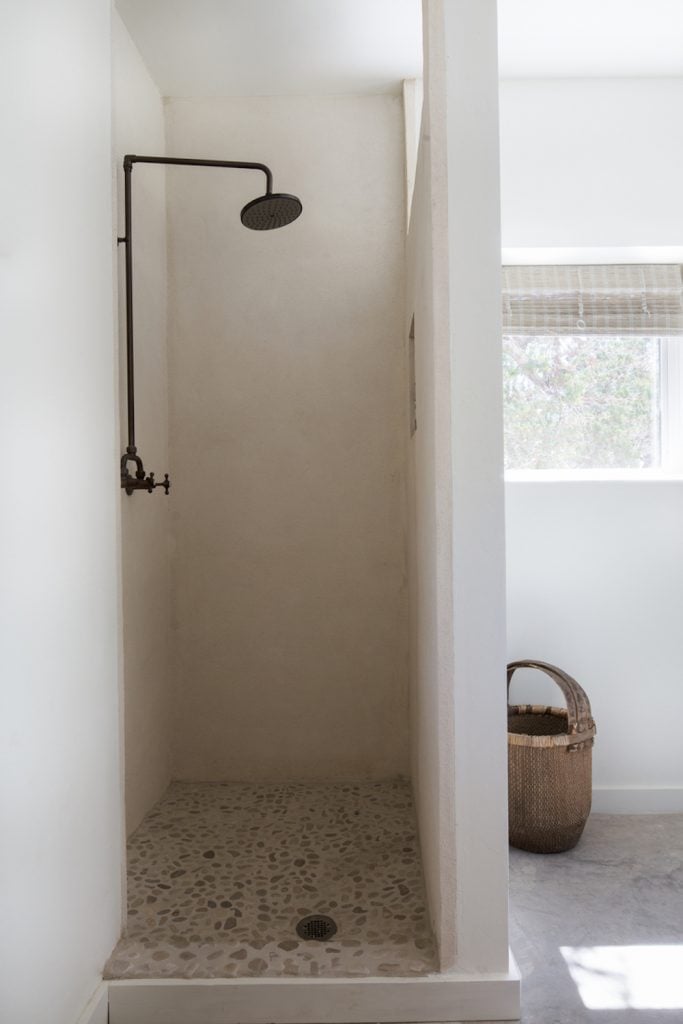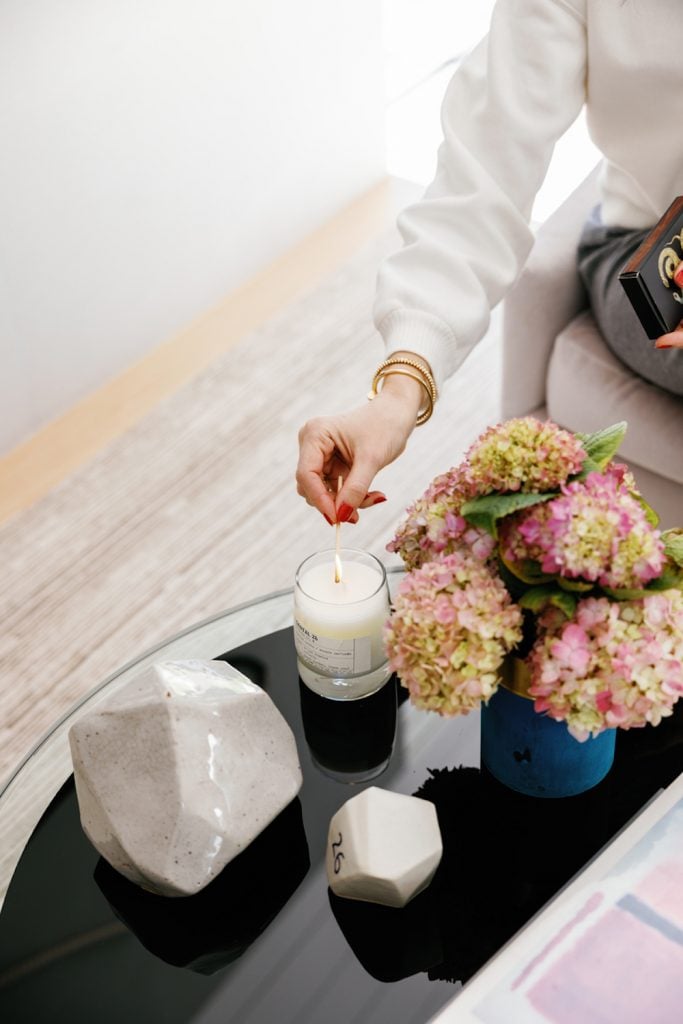Every morning, Tony Robbins wakes up and plunges into a 57-degree ice bath. He, along with many other celebs, professional athletes, and health and wellness gurus have caught on to the myriad benefits of cold water therapy can have on your physical and mental well-being. But despite gaining traction in recent years, cold therapy has been around for centuries. (Hippocrates is often credited as the first person to document the benefits of hydrotherapy in medicinal practices and Traditional Chinese medicine has long supported the practice’s preventative and health-promoting properties.) These days, on social media and across the internet, cold water continues to make waves in today’s wellness culture.
Though I’d heard about taking cold showers to increase energy or plunging into an ice bath to soothe sore muscles, I personally never bought into the benefits until I came across Wim Hof and his cold therapy method. (As with many previously-under-the-radar wellness practices, I have The Goop Lab to thank for the introduction.) After the episode, I knew I had to try it for myself. So I dug into the research and was blown away by what I learned.
The benefits of cold water therapy abound, including top-of-mind contenders like increasing your metabolic rate and reducing inflammation—and they seem to go on and on.
Featured image from our interview with Nitsa Citrine by Claire Huntsberger.


The Benefits of Cold Water Therapy
Experts say that when practiced on a regular basis, the benefits of cold water therapy can provide long-lasting changes to your body’s immune, lymphatic, circulatory, and digestive systems that enhance the overall quality of your life.
With a few minutes of cold therapy (and a whole lot of grit), you may be able to activate your body’s natural healing powers and promote a greater sense of well-being. Scroll on for five reasons why we will be turning the temp way down on our showers. (Plus, tips to help you get started—because if you’re used to warm water, this might be a challenge.)


Fires Up Your Lymphatic System
The lymphatic system is a network of vessels that run throughout the body, clearing out waste, bacteria and microbes from your cells. The lymphatic system essentially helps your body cleanse itself.
Unlike your blood, which is constantly pumped through your body by the heart, your lymph fluid doesn’t have a central pump. Instead, your lymphatic system relies on muscle contractions to pump the lymph fluid through the vessels. So if you don’t exercise or your lymphatic system itself becomes slow or inefficient, the fluid stagnates and toxins build up, manifesting in colds, joint pain, infection and even disease.
Cold water immersion causes your lymph vessels to contract, forcing your lymphatic system to pump lymph fluids throughout your body and flush waste out of the area.
One of the benefits of cold showers is that they trigger the immune system’s white blood cells, prompting them to attack and destroy any unwanted substance in the fluid. It’s sort of a domino effect—the cold water affects the lymphatic system, which in turn affects the immune system. The ultimate impact? You get to reap the benefits of feeling happy and healthy.


Improves Circulation and Heart Health
Good circulation happens to be one of the most critical components of our overall health and well-being. When you suffer from poor circulation, not only is your blood flow compromised, but your heart becomes stressed. This can ultimately lead to fatigue, headaches, high blood pressure, muscle cramping, and even heart attack and stroke.
With improved circulation, we can boost heart health, enhance mental performance, support the immune system and metabolism, and simply give ourselves more strength and energy to live our lives.
Exercise and a healthy diet are two well-known ways to improve circulation. But cold-water immersion can also stimulate blood flow. When you immerse your body in cold water, the blood rushes to surround your vital organs. Your heart is then forced to pump more efficiently, pushing blood through all your vessels and supplying every part of your body with the oxygen and nutrients it needs. Do this on a routine basis and you can help promote healthy blood circulation, and, ultimately, a healthy body, heart, and mind.


Reduces Inflammation
Cold water immersion has been scientifically proven to help counteract side effects of inflammation and sore muscles after a hard workout. One of the top cold shower benefits is lowering the temperature of your damaged muscle tissue and constricting the blood vessels. This helps reduce any swelling and inflammation, and even numbs the nerve endings, which can bring immediate pain relief. This is why professional athletes soak in an ice bath following a strenuous workout.
But you don’t have to be a serious athlete to reap the benefits of cold water immersion. By simply taking a quick cold water shower after a stint at the gym or some heavy work around the house, you can help reduce soreness and inflammation. And by reaping the benefits of cold water therapy, you may find that you don’t need to reach for the ibuprofen to help soothe your aches. Welcome to a more natural way of speeding up your recovery.


Boosts Your Mood
Feeling the winter blues, or having trouble managing stress? Cold therapy can help. It may seem like a superficial fix, but the benefits of cold water therapy actually run deeper than you think when it comes to boosting your mood.
A 2007 research study found that cold showers can help treat depression symptoms, and if used on a routine basis, may be more beneficial than prescription medications in lifting moods. This is due to the stimulation of the dopaminergic transmission in the mesocorticolimbic and nigrostriatal pathway. Otherwise said, the cold water triggers a flood of mood-boosting neurotransmitters, which make you feel happy. A separate study that analyzed the effects of regular winter swimming on the mood of swimmers showed that after four months of routine cold water swimming, the subjects felt more energetic and active than those who did not take a daily polar plunge.
So the next time you find yourself feeling down, consider the benefits cold water therapy may have in keeping your body and your mind happy. Be it a dip in the ocean, a lake, or a simple cold shower at home—anything goes!


Strengthens Hair, Skin, and Nails
If you struggle with dry skin and hair, you know what a challenge it can be to achieve a dewy glow. The answer you may not have thought of until now? A cold shower.
According to experts, cold water helps reduce the size of your pores and tightens your skin. Because cold water doesn’t encourage your pores to open up and release oils like warm water does, you won’t have excess oil that can lead to greasy hair or breakouts. You’ll retain those oils to keep your hair and skin moisturized, leaving them smooth and healthy. The cold water also stimulates hair follicles, which naturally helps in increasing its thickness and length. Double win.


Cold Water Therapy: How to Get Started
The good news is, you don’t have to jump into a 50-degree lake to reap the benefits of cold water therapy. You can dip your toes in first! Here’s how experts recommend starting your cold therapy journey:
- Ease yourself into cooler showers. Start by slowly decreasing the amount of hot water you use. Of course, you could jump right into it by not using hot water at all, but this could be a bit of a shock to the system.
- Breathe deeply. Once you’ve got the temperature that’s right for you, enter the shower slowly and take a few deep breaths.
- Start slowly. Begin with your hands, then your feet, then the rest of your body.
- Continue with your routine. Progress through your normal hair and body washing, getting out as soon as you feel you’re getting too chilled.
- Continue gradually. Over time, you’ll get used to cold showers and you’ll be able to spend more time in the shower and lower the temperature of the water even more.
Of course, always remember to breathe through it. Slow and steady breaths for the win. You’ve got this!





